Back in the Halcyon days of film photography, you know, analogue, grain smelly chemicals etc, photographers alwasy used to play around with different films, (different emulsions on snobby days) to get to get interesting images. One of the favourites was using film with infra red sensitivity. Most popular was Kodak High Speed Infra Red. Ilford produced, (still produce I believe as of May 2015) a film with Extended Red sensivity - SFX-200 These films , as well as their extended/Infra-red sensitivity were also sensitive to visible light - so this had to be filtered out with a deep red filter. The fun thing is that digital cameras are inherently sensitive to IR, but in higher end cameras an internal filter blocks IR. (Some can be removed by specialist companies) - anyway, although my Nikon DSLR blocks IR, my fine little Canon PowerShot SX230 does not. So, bung a deep red filer in front of the lens, tweak the exposure a bit, and you get a very passable image. Bit more of that tweaking to do - since the photo has been taken through a red filter it will look red. |
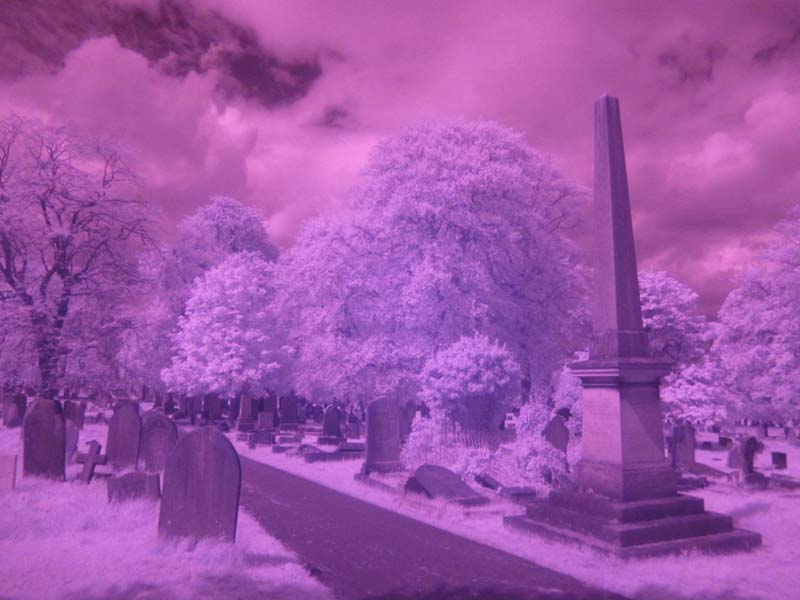
So, in something photoshopish, convert the image to grey-scale, and adjust the brightness and contrast. IR content of light varies - time of day, time of year, amount of sunlight and so on. With film this could get quite costly, not knowing exactly what exposure to give. And IR focuses in a different plane to Visible light so if one forgot to adust it, was easy to get over or under exposed images that were also out of focus. Of course with digital cameras we just check and do it again. Leaves, grass etc appear white - |
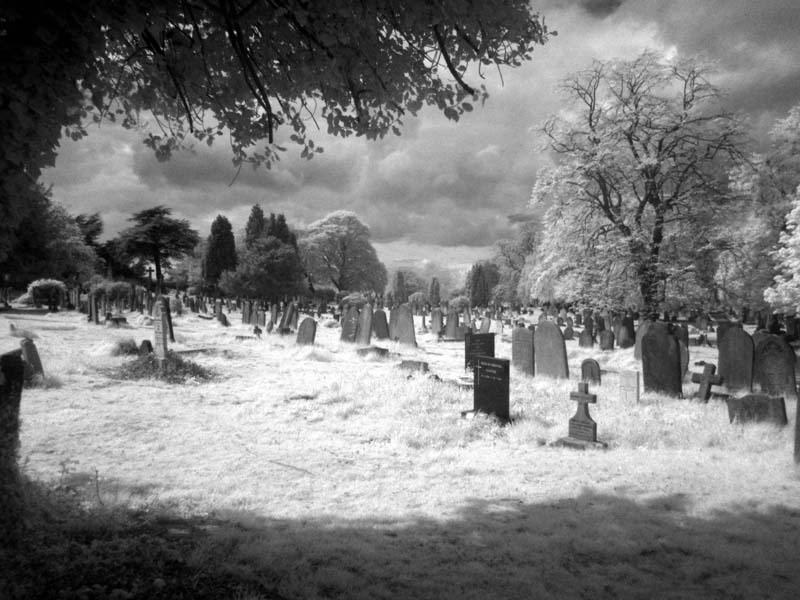
Since these digital images are generated in colour it's yet more fun to play around and get colour effects. |
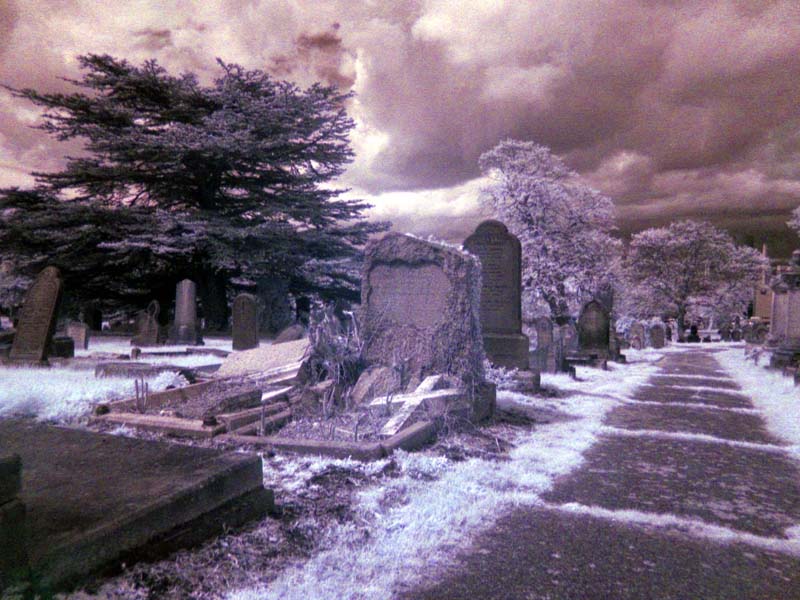
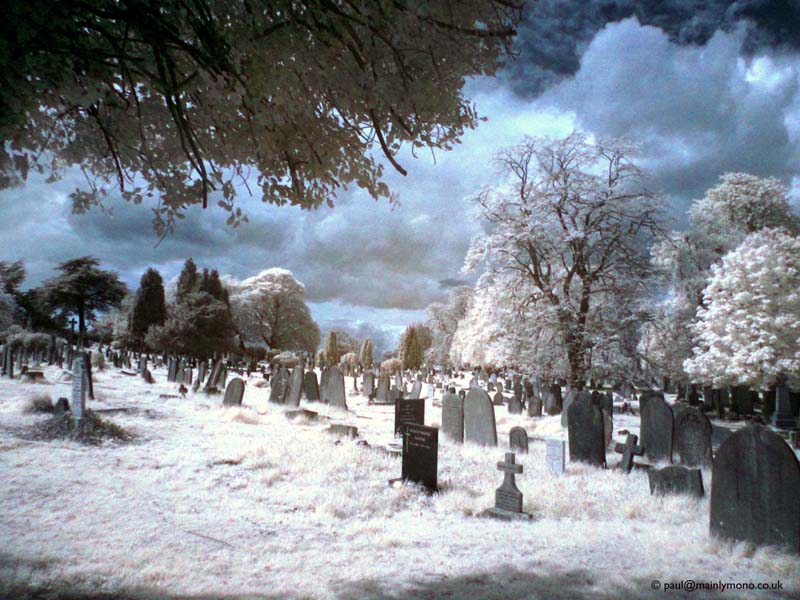
The above photos all 7th May 2015 and © Paul Smith, paul@mainlymono.co.uk
And now back in time to when the trees and I were younger - all1990s
Kodak High Speed Infra Red
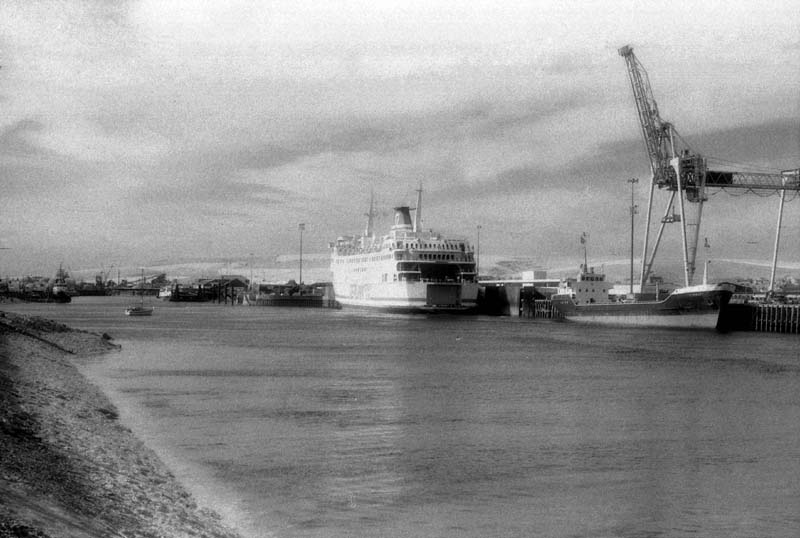
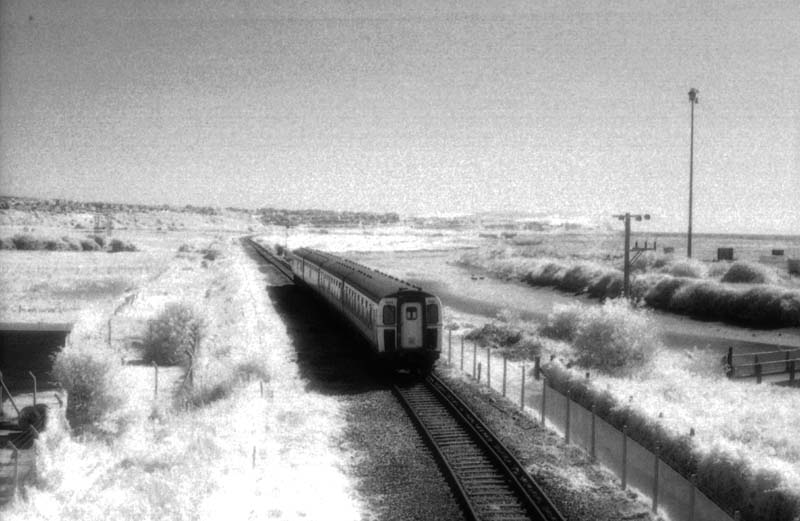
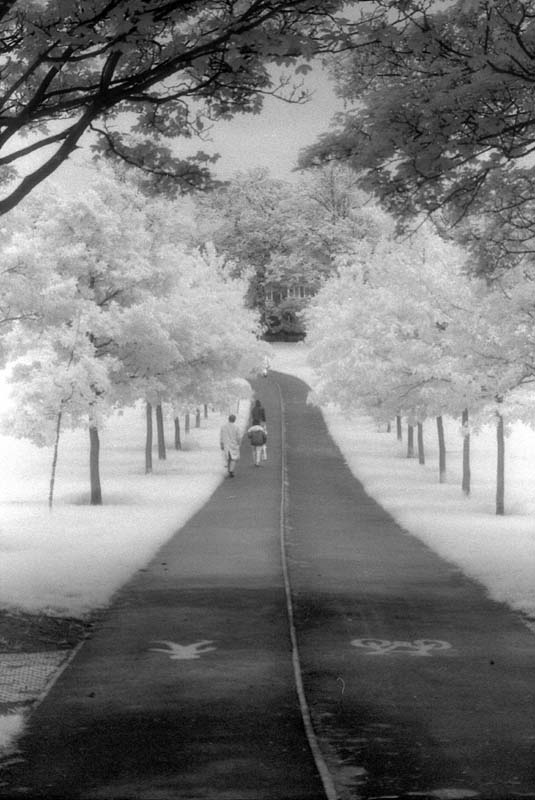
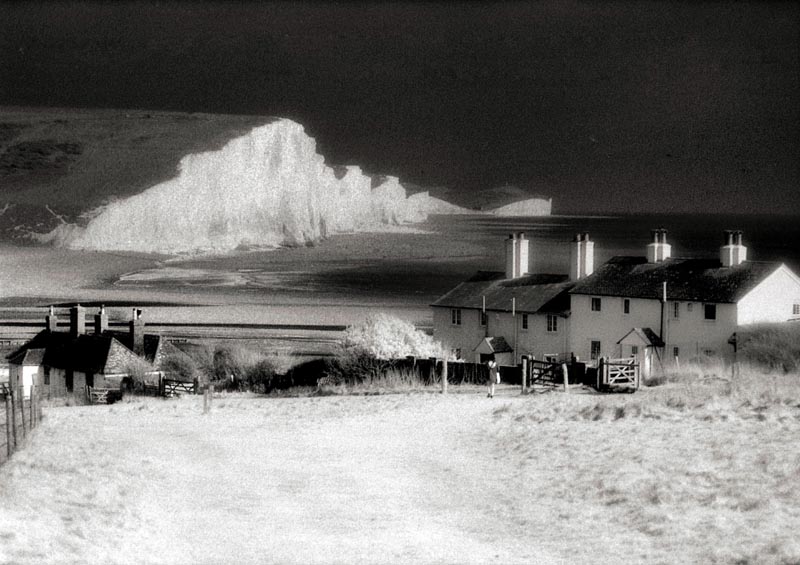
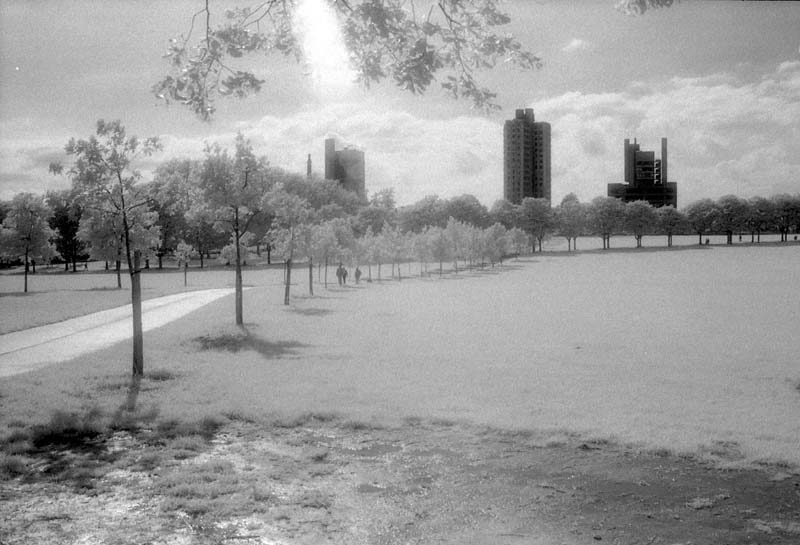
--and finally - Ilford SFX 200
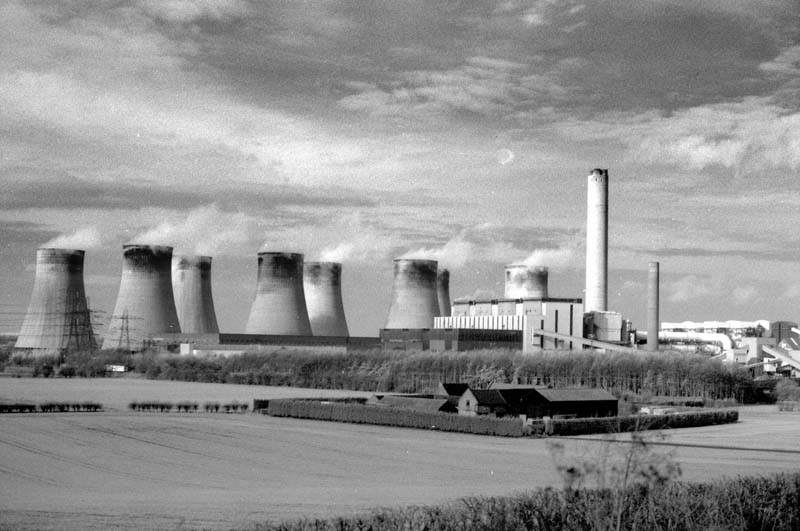
More about Infra Red |
|
Ilford SXF 200 |
|
Kodak HighSpeed IR |
|